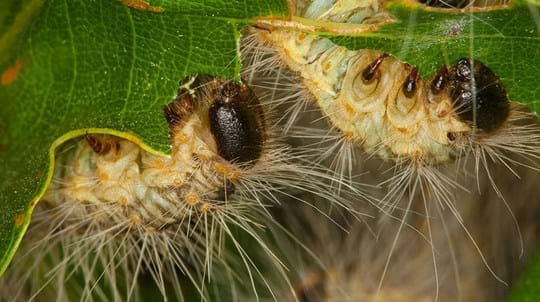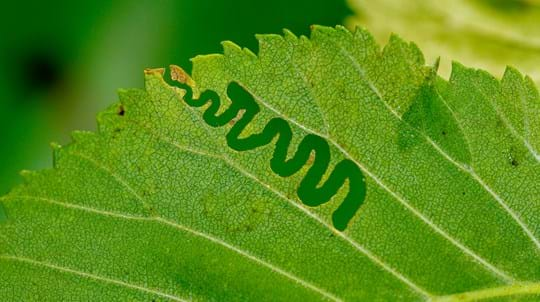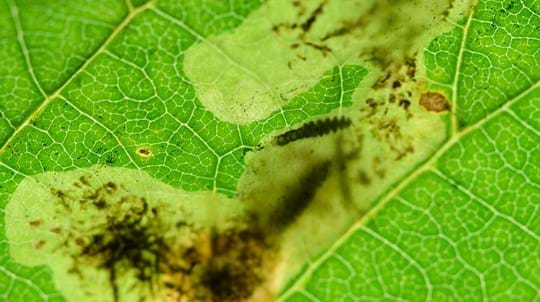
Credit: Dave Watts / naturepl.com
What is the pine processionary moth?
Adult moths have cream forewings with brown markings, white hindwings and a wingspan of 31–45 mm. The adults are difficult to distinguish from other species of moth.
The adults emerge from soil where they pupate and fly in the summer, no further than 1.7km. They live for only one to two days, during which time they mate and lay their eggs on pine needles. Females lay batches of 70–300 eggs. The eggs hatch in the autumn after 30–45 days and the emerging caterpillars feed on the needles of the trees. They then overwinter in their tent-like nests high in pine trees, and form processions on the ground in early spring before pupating in the soil until late summer, when they emerge as adult moths.






